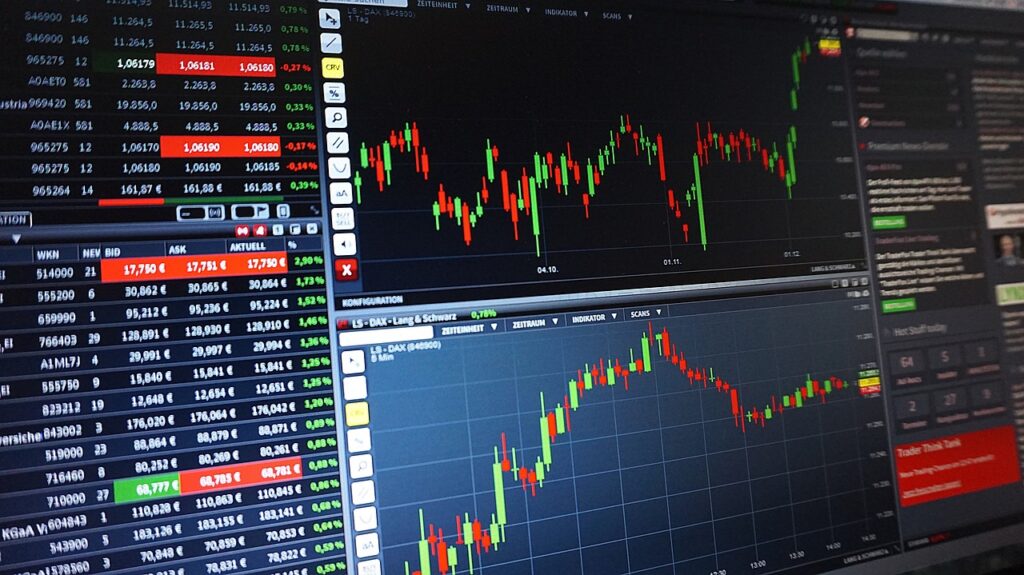Fundamental Analysis in Forex Trading
Fundamental analysis in forex trading is like looking at the big picture of a country’s economy to understand how its currency might change in value.
It involves studying things like interest rates, inflation, economic growth, employment rates, and political stability.
By analyzing these factors, traders try to predict whether a currency will go up or down in value over time.
It helps them make smarter decisions about when to buy or sell currencies to potentially make a profit.

Introduction of Fundamental Analysis in Forex trading:
Fundamental analysis in forex trading assesses currency value by studying economic indicators, central bank policies, and geopolitical events. Economic factors like GDP growth, employment rates, and inflation influence currency prices.
Central bank decisions, especially interest rates, affect investor sentiment and capital flows.
Geopolitical events such as elections and conflicts can create market volatility.
Combining fundamental analysis with other strategies helps traders make informed decisions.
Understanding these factors is crucial for navigating the forex market and identifying trading opportunities.
Central Bank policies and interest rate impact on currency value:
Central bank policies and interest rates play a vital role in determining currency value.
When a central bank adjusts interest rates, it affects borrowing costs and economic activity.
Higher interest rates attract foreign investment, strengthening the domestic currency.
Conversely, lower interest rates make borrowing cheaper but can lead to currency depreciation as investors seek higher returns elsewhere.
Central bank statements and policy decisions influence market sentiment, impacting currency demand.
Understanding these policies helps traders anticipate currency movements and make informed trading decisions.
Central bank actions reflect economic conditions and expectations, making them essential factors in forex market analysis.
Combining The fundamental and technical analysis in forex success:
Combining fundamental and technical analysis in forex trading involves using both macroeconomic factors (like economic indicators, geopolitical events) and price charts to make informed trading decisions.
Fundamental analysis examines broader economic conditions and events that could affect currency values, while technical analysis analyzes past price movements to predict future trends.
By integrating both approaches, traders gain a more comprehensive understanding of market dynamics, potentially increasing their chances of success.
This dual strategy helps traders identify entry and exit points, manage risk, and adapt to changing market conditions for more profitable trades.
Risk management Statergies in forex trading:
In forex trading, risk management involves setting clear stop-loss orders, diversifying investments, and limiting each trade to a small percentage of your total capital to protect against losses and preserve capital.
The limitations of fundamental analysis:
Fundamental analysis is a method used to evaluate the intrinsic value of a stock by examining its financial statements, management, industry
conditions, and economic indicators. However, it has limitations, such as relying heavily on historical data, being subjective due to interpretation differences, overlooking market sentiment and irrational behavior, and struggling to account for unexpected events or black swan events.
Additionally, it may not be suitable for short-term trading or volatile markets, and it requires extensive research and expertise to perform effectively.
Economic indicators understanding the basics:
Economic indicators are statistics used to assess the health of an economy.
They provide insights into its performance and direction.
These indicators include measures like GDP (Gross Domestic Product), unemployment rate, inflation rate, and consumer confidence.
GDP indicates the total value of goods and services produced in a country.
The unemployment rate shows the percentage of people without jobs who are actively seeking work.
Inflation measures the rate at which prices for goods and services rise. Consumer confidence reflects the sentiment of consumers about the economy’s future.
These indicators help policymakers, businesses, and investors make informed decisions about economic policies, investments, and market trends.
Visit website
Conclusion harnessing fundamental analysis for informed forex trading;
Harnessing fundamental analysis for informed forex trading involves analyzing economic indicators, central bank policies, geopolitical events, and market sentiment to make trading decisions.
By understanding how these factors impact currency values, traders can anticipate market movements and make more informed trades.
Fundamental analysis helps traders assess the underlying factors driving supply and demand for currencies, allowing them to identify trends and potential trading opportunities.
However, it’s important to combine fundamental analysis with technical analysis and risk management strategies for a comprehensive approach to forex trading.
By integrating fundamental analysis into their trading strategies, forex traders can gain a deeper understanding of the market and improve their chances of success.
At the the fundamental highly impact on FOREX TRADING market .I recommend the people learn about fundamental analysis high level.Then you became ha good trader in Forex market .
2 thoughts on “Fundamental Analysis in Forex Trading”